After more than decade as an American living in Italy, I’ve become something of a go-to source for friends planning trips to Europe’s top family vacation destinations. One of the questions I hear most often is whether it’s worth visiting the most popular tourist attractions in Europe, or if they’re too overhyped to live up to their reputations? The truth is that while some simply aren’t worth the hassle, many of the best Europe tourist attractions are—especially if you visit strategically.
Below are the Europe tourist attractions I think live up to (and sometimes even surpass) the hype. I’ve also offered tips for making the most of each attraction, plus some recommended reading that will help each spot come alive.
TIMELESS TRADITIONS: Twinkling lights, towering trees: The 10 best European Christmas markets for families
1. The Eiffel Tower
Paris, France

Perhaps the most photographed tourist attraction in the world, the sheer scale, beauty, and architectural muscle of this wrought-iron lattice structure in Paris almost defies belief when seen in person. The Eiffel Tower was built by Gustave Eiffel from 1887 to 1889 as the entrance to the 1889 World’s Fair, a soaring structure meant to impress the world with French engineering and design prowess. At the time, and for 41 years after, it was the tallest man-made structure in the world.
Controversial when built, many Parisians hated it. Today it is the most-visited paid monument in the world and a great tourist attraction to visit with kids (even if you only have a few days in Paris). There are three levels to the tower, including a Michelin-starred restaurant perched 125 meters over Paris on the second level. There’s even a Champagne bar at the very top. Tickets to visit the tour can be booked in advance on the official site, which is important if you want to skip the lines.
The Eiffel Tower is surrounded by the beautiful grassy fields of the Parc du Champs des Mars, which is a perfect place for a picnic before or after your visit, and an especially good place to watch the tower’s stunning light shows after dark.
2. The Louvre
Paris, France
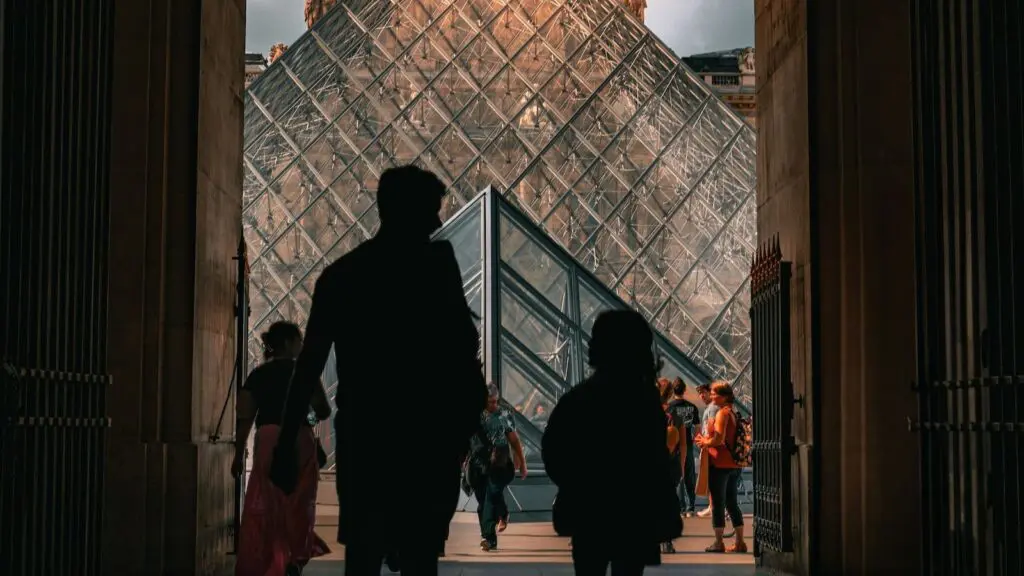
Another Parisian must-do attraction, The Louvre is the largest and the most-visited museum in the world and home to some of the most famous works of art on the planet. Booking ahead is essential, a task that can easily be done on the museum’s official site. I always try to take a tour at the Louvre, as I find going deeper on fewer works helps to avoid museum fatigue.
The Louvre Museum is located in the Louvre Palace, which was originally a castle built in the 12th and 13th centuries. It expanded over time to its current sprawling mass. Housed in a wing in an arcade is Le Café Marly, a pricey but beautiful place to have lunch or a drink overlooking I.M. Pei’s stunning glass pyramid entrance to the museum.
Whether or not you’re taking a tour, you can always find a quiet place to stop and ponder the art. If the crowds around the Mona Lisa are too much, wander until you find an empty section. No matter what you discover (from medieval swords to Egyptian pottery to Islamic art), it will be among the rarest and best examples in the world.
SEE THE WORLD: 15 best group travel companies for guided tours
3. Mont Saint-Michel
Normandy, France
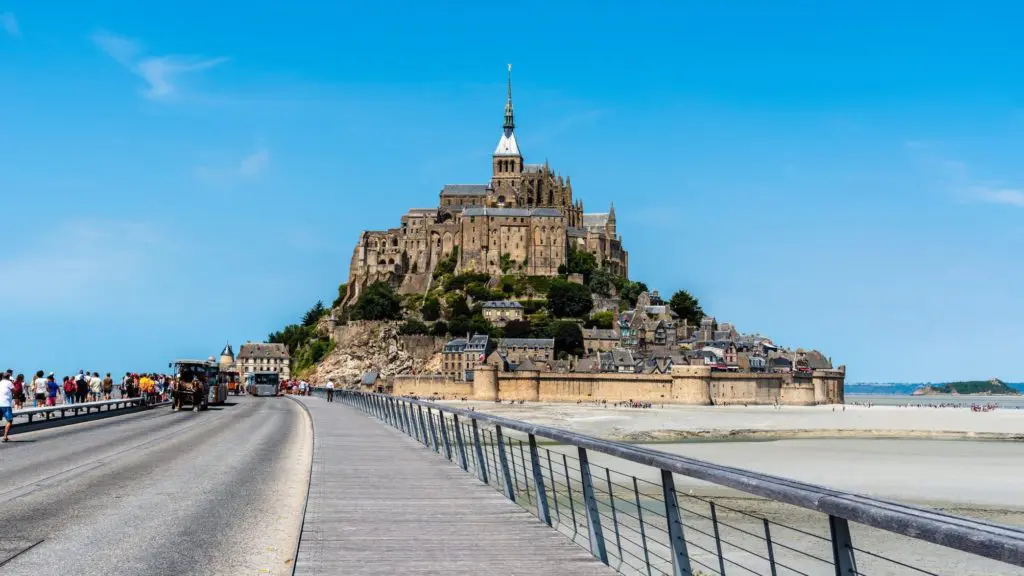
Normandy’s tiny-but-magical Mont Saint-Michel is a tidal island just off the coast of mainland France. The difference between high tide and low tide here averages 46 feet, which inspired Victor Hugo to write that the tide comes in greater than the “speed of galloping horses.” The dramatic tides, combined with the surrounding quicksand, made the island very defensible and dangerous to reach by foot. Today, it’s a lot easier to reach via a causeway.
The dramatically pointed island has been inhabited since the 6th century and became a monastic settlement in the 8th. It’s topped by the Mont-Saint-Michel Abbey, which evolved from the earliest monastic buildings to reach its peak of power in the 1100s. After the Reformation and French Revolution, Mont Saint-Michel was used as a prison until 1863.
Reading Anthony Doerr’s All the Light We Cannot See, largely set in nearby Saint-Malo (which is also a great town to stay in if you want to make Mont Saint-Michel a day trip) gives a sense of this area during World War II before it was considered one of the top Europe tourist attractions.
4. The Leaning Tower of Pisa
Pisa, Italy

The first time I saw the Leaning Tower of Pisa, I was surprised by how cute this famous Italian tower is despite being just a third of the height of the Washington Monument. Started in 1173, it took 199 years to build and began to lean due to the soft subsoil and inadequate foundations as soon as the second story was added.
Is it worth the admission price to climb to the top? I’ve never done it, but most visitors I’ve asked say no, as the view from the top is of the flat town of Pisa. Visiting the cathedral and baptistery next to the tower in the beautiful, grassy Piazza dei Miracoli (Plaza of Miracles) might be a greater reward than climbing the tower, as these lesser-known Europe tourist attractions offer some of the best examples of Romanesque architecture in all of Italy.
Curious enough to climb? There’s a mystery you can solve on the way up. Come up with your own answer to the controversy about how many steps there are to the top—no one seems to agree—and reports range from 250 to 296.
5. The Colosseum
Rome, Italy
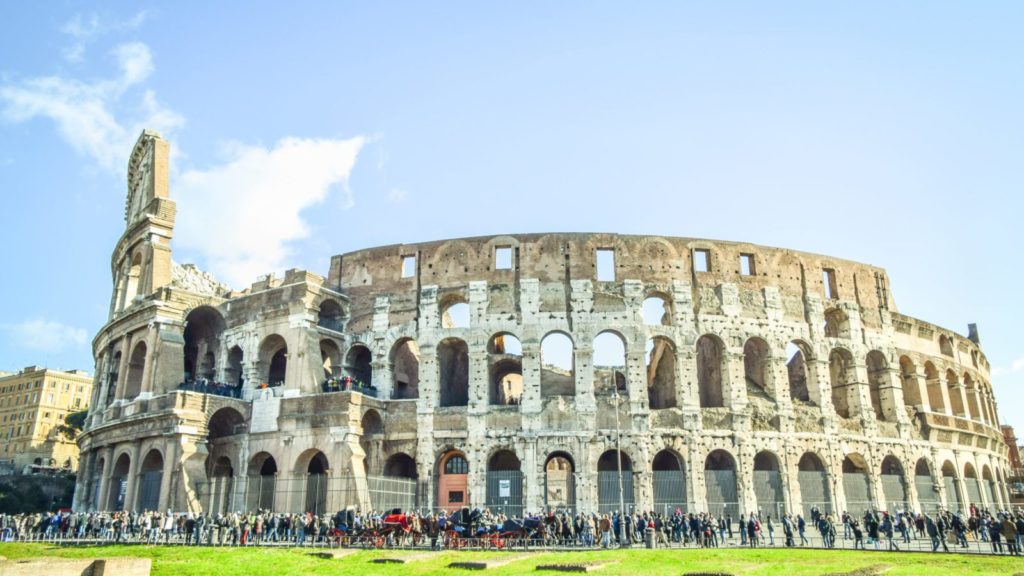
The city of Rome may be one of the top tourist attractions in Europe in its own right, but you can’t go to Rome and not see the Colosseum, the world’s largest ancient amphitheater. Built from 72 to 80 CE to entertain an audience of up to 80,000 people, it showed off the power and wealth of the Roman Empire.
An underground labyrinth of tunnels, walkways, pulleys, and elevators let the Roman stage crew put on events that would challenge hunters with wild animals appearing from unexpected directions, flood the arena with water for mock naval battles, put on elaborate gladiator fights, and produce dramas based on Roman mythology. When completed, a new retractable floor will showcase the ancient technology while allowing visitors to stand on the floor of the Colosseum for the first time in modern times.
Sometimes visitors planning trips forget that the Colosseum is only part of the much larger “downtown” of ancient Rome. The amphitheater adjoins the Forum and the Palatine Hill, and to really get a sense of this center of the Roman Empire, you need to explore all three.
To make the most of a visit, the best things to do are to get advance tickets or book a tour for early or late in the day. The stories of this massive structure come alive with the help of a guide, and some tours are geared specifically to kids. Kids eight to 12 (and their parents) might want to read some of The Roman Mysteries series—the eighth book takes place in the Colosseum.
WOMAN-LED TRAVEL: 11 best travel companies for women-only tours
6. Vatican City
Rome, Italy
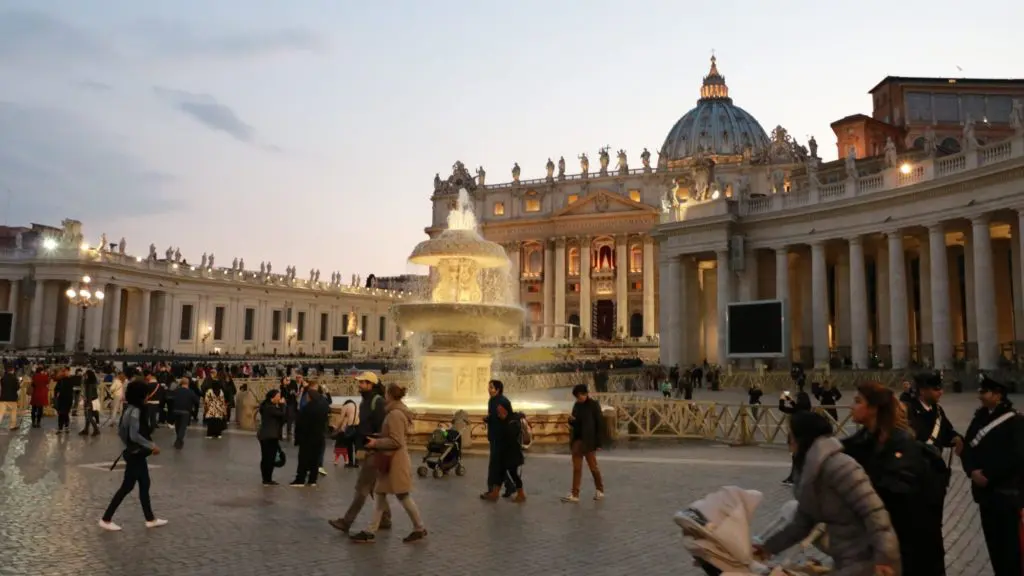
Fully surrounded by Rome, and the smallest independent state in the world, Vatican City has been the center of the Catholic Church since early Christianity. St. Peter’s Basilica, the Sistine Chapel, and the Vatican Museums are all located inside this 121-acre city-state, which is home to the Pope and a site of pilgrimage.
St. Peter’s Basilica dates back to the 4th century, but what you see today was designed by Renaissance heavyweights including Michelangelo, Bernini, and Bramante. They created the largest church in the world and a masterpiece of Renaissance architecture. The treasures go far beyond just the building and include Michelangelo’s Pieta and Bernini’s stunning Baldacchino, built at the very center of the church above where St. Peter is said to be buried.
The Vatican Museum contains 26 separate museums ranging from an Egyptian and Etruscan collection to a Museum of the Profane, as well as the Sistine Chapel and Raphael’s Rooms. There’s no fee to enter the Basilica, but lines can be very long.
Vatican City is another of the best Europe tourist attractions where a guided tour is a must. Not only will booking with a guide bring the surrounding splendor to life, it will also help you easily get into places like the Sistine Chapel—because Michelangelo’s ceiling cannot be imagined, it really must be seen. Note that there’s a dress code for visiting the interiors. Knees and shoulders must be covered or you will be denied admittance, ticket or not.
7. Venice Canals
Venice, Italy

The Italian city of Venice is one of my favorite places on Earth. When I first moved to Italy, I lived here for six weeks, and I still visit a couple of times a year. But to fall in love with Venice, you must get away from the tourist freeway of souvenir shops and tourist restaurants that runs from the train station to the Rialto Bridge and San Marco Square.
You don’t even have to veer far off the beaten path to find the true beauty of Venice. Mere steps away you’ll find neighborhoods and back streets where there’s incredible beauty everywhere you turn. My top suggestion for friends who want to visit Piazza San Marco is to never go during the day. Its beauty comes alive at night.
The biggest attraction in Venice is a famed gondola ride, and it really is a special thing to do. Seeing Venice at water level is a unique experience. Prices are set by the local authorities for a 25- to 30-minute ride; daytime rides are less expensive than evenings. Gondolas take different routes; some focus on the Grand Canal, others on the tiny back canals, and you can ask if you have a preference.
I highly recommend splurging to go after dark—it’s breathtaking to be on the water as the boat cuts through the silent still water of the back canals, sweeping under illuminated windows above. And yes, you can ask your gondolier not to sing. Taking a gondola is also a very special experience with kids, who tend to be spellbound by the sights and sounds. And for true adventurers you can take a lesson to learn to row a traditional Venetian boat.
As with much in life (and most of the best Europe tourist attractions), common sense prevails. Do double check on price before you get in the boat, and if you don’t like the first gondolier you talk with, feel free to move on—their personalities do make a difference in your experience. If you have had a good trip, a tip of around 10 percent is always appreciated.
Delve into Venice before you arrive by reading Mann’s Death in Venice, Ruskin’s The Stones of Venice, and for fascinating practicalities on how this wonder was built, Venice Against the Sea by John Keahey.
8. Sagrada Familia
Barcelona, Spain

Lively Barcelona is an eclectic city packed with interesting things to explore, admire, and eat. But no trip to Barcelona would be complete without seeing Gaudi’s unfinished masterpiece of a basilica, the Sagrada Familia.
Work on the Sagrada Familia began in 1882 and before the pandemic it was due to be largely finished by 2026, in time for the centennial of Gaudi’s death (this schedule has been delayed by a couple of years). Gaudi, who took over as architect soon after the project began, transformed Sagrada Familia from a straightforward neo-Gothic church into a masterpiece of his unique architectural vision.
He died (after being hit by a tram) in 1926 when less than 25 percent of the project was complete. Gaudi’s elaborate plans, drawings, and plaster models were partially destroyed during the Spanish Civil War, and it took 16 years for experts to try to reconstruct as much as possible of the documentation of Gaudi’s vision.
As soaring as the present work-in-progress is, there are still six major towers to be completed, including a main spire that will soar above the current ones. When completed, it will be the highest church in the world.
Since the start, construction of the Sagrada Familia in Barcelona has been privately funded and the entrance fees are now a major source of money for the project. The lines for entry can be very long, so booking a tour is a good way to avoid what can otherwise be a very long wait.
CLOSER TO HOME: With or without crowds, these 10 incredible U.S. tourist attractions totally are worth a visit
9. Stonehenge
Salisbury, England
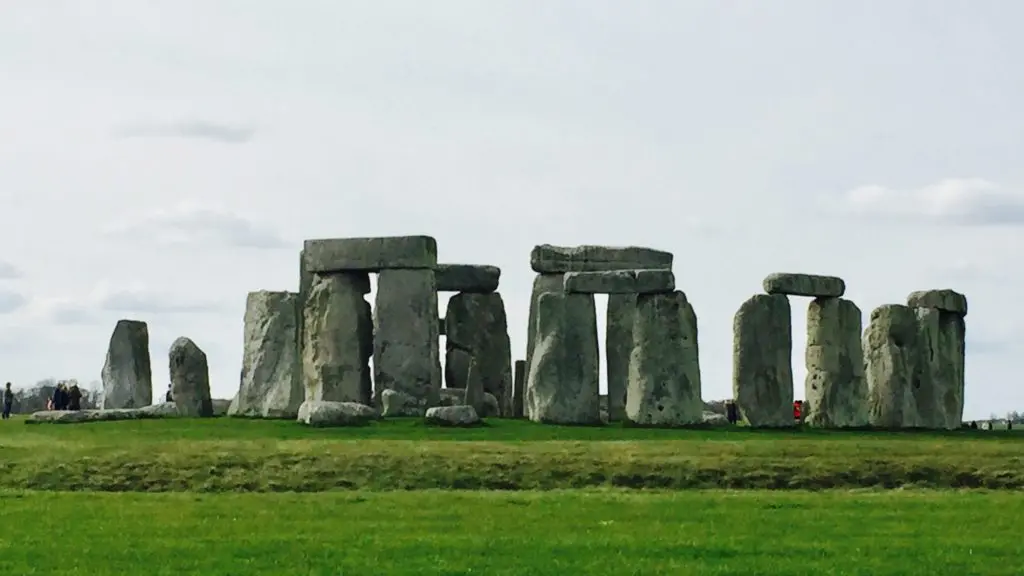
This prehistoric circle of stones on the Salisbury Plain in England is truly one of the must-see Europe tourist attractions. Standing in the middle of the bright green fields looking at this massive creation dating from 3000 BCE connected me to the past in an unexpected and visceral way. The vertical stones of Stonehenge are up to 13 feet high and weigh 25 tons. And as impressive and mysterious as the iconic circle of stones are, what is most interesting to me is how much is left to be discovered at this site and the surrounding area.
Archeologists have discovered post holes (under the old visitor car park used until 2013) that date from 8000 BCE. Several exciting projects, including the Stonehenge Hidden Landscape Project, which uses non-invasive geophysical imaging techniques, are turning up important and major discoveries nearly every year. In February of 2021 a vast trove of Neolithic and Bronze Age artifacts was uncovered during the start of a now-halted tunnel to divert a nearby road under the complex.
A stunning visitors center was opened in 2013 and is rich with information. Booking access to the site in advance is mandatory. English Heritage is now offering a VIP experience to visit the site in a small group with no other visitors, access inside the stone circle, and an expert to answer questions.
If you can’t get enough prehistory, Stonehenge is just the start. Visit nearby sites like the Avebury Stone Circle, the world’s largest prehistoric stone circle, which encircles part of the charming village of Avebury. Whether you want to make it a day trip from London or part of a broader itinerary exploring the region, Stonehenge is worth the effort it takes to visit.
10. The Acropolis
Athens, Greece
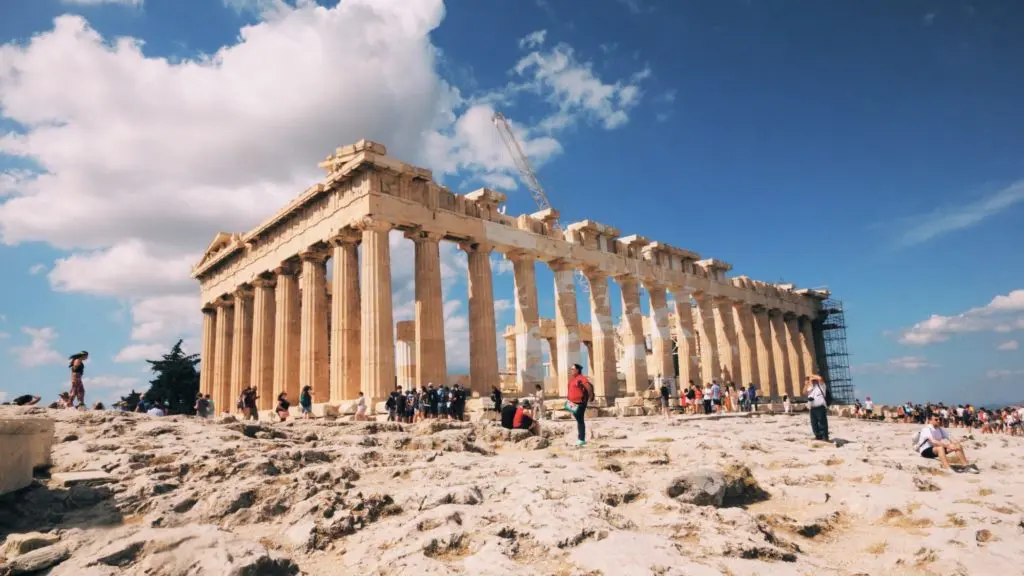
The Acropolis dominates the skyline of Athens just as it has since 1600 BCE. With its prime perch 490 feet above the city center on a steep outcropping of rock, it’s easy to see why the builders chose this spot as the site for the collection of ancient Greek civic and religious buildings, including the famous Parthenon.
Although the earliest traces of buildings date to the late Bronze Age, the Acropolis as we see it now largely comes from the Golden Age of Athens (460 to 430 BCE). Over the centuries, the buildings have led many lives: The Parthenon itself has been a Greek temple to the god Athena, a Christian church, and a mosque.
The UNESCO World Heritage site is recognized as the “greatest architectural and artistic complex bequeathed by Greek Antiquity to the world.” What’s more, says UNESCO: “On this hill were born Democracy, Philosophy, Theater, Freedom of Expression and Speech, which provide to the day the intellectual and spiritual foundation for the contemporary world and its values.”
Even the story of its crumbling state yields fascinating history: The Parthenon was used to store gunpowder during a war in the 1600s between the Venetians and Ottoman Turks for control of Greece. A cannonball fired by the Venetians in 1687 hit the Parthenon and caused an explosion of the gunpowder inside, causing the ruined state of the building we see today.
Although stunning, the Acropolis can be physically exhausting to visit. To make a visit more comfortable, the best things to do are to bring a hat and lots of water—there is no shade to protect against the scorching summer temperatures, and there’s no food or water available once you’re through the ticket booth. Wear shoes with a good grip as the rocks are slippery after centuries of being polished by feet.
And try to beat the crowds by getting to the ticket areas (there are two) with a pre-purchased ticket at least 30 minutes before the site opens so that you can be one of the first through the entrance. (There is also a multi-ticket option that includes the Acropolis plus six other sites; it can be purchased easily at any of the less crowded attractions.)
Go directly to the top—for now ignoring all the amazing things you’ll pass on your way—and you should be one of the only ones in the Parthenon, an experience that’s well worth the brisk climb. The day before your visit, be sure to spend some time at the Acropolis Museum to get an overview of the rich history. Want to know more? Pick up a copy of Mary Beard’s The Parthenon for a cultural history and archeological deep dive.
European countries boast some of the most visited sites in the world. But before you write off top Europe tourism attractions entirely, consider how timing your visit wisely and booking ahead could transform a miserable visit into one that makes you realize just how special the best Europe tourist attractions really are.
Tips for visiting Europe’s most crowded tourist attractions
Europe’s best tourist attractions are almost as famous for their dense crowds as for their beauty, but there are some tricks I’ve learned to make the visit as fantastic as the location. Crowds, lines, and heat are, in my book, enjoyment killers. But timing a visit to the top European tourist attractions for early or late in the day can address all three challenges in one fell swoop. The light is always more spectacular in early morning and at dusk, and scheduling a visit during these windows not only maximizes beauty but minimizes crowds.
Time of year matters as much as time of day, too. Whenever possible, plan trips for just before or after spring break, early in the summer vacation season, or fall shoulder season (late October or early November) when you’ll enjoy nice weather with a fraction of the crowds.
Most European tourist attractions sell tickets in advance, which generally allows you to skip the long ticket lines. Many museums have extensive virtual tours of their collections (that were really beefed up due to the pandemic), so doing some advance research to find out what you really want to see has never been easier.
More from FamilyVacationist:
- Europe with kids? These are the top family vacation spots in Europe for every age and interest
- This European beach destination looks and feels like the Mediterranean—but it’s way more affordable
- I’ve taken my kids to Europe dozens of times. Here are my tips for a perfect European family vacation.
- Europe without the crowds? Travelers say these are the best crowd-free spots
- You don’t need a passport at these 7 U.S. destinations that feel just like an international vacation
Nancy Raff tells the stories of life in Italy on her site itch.world.













